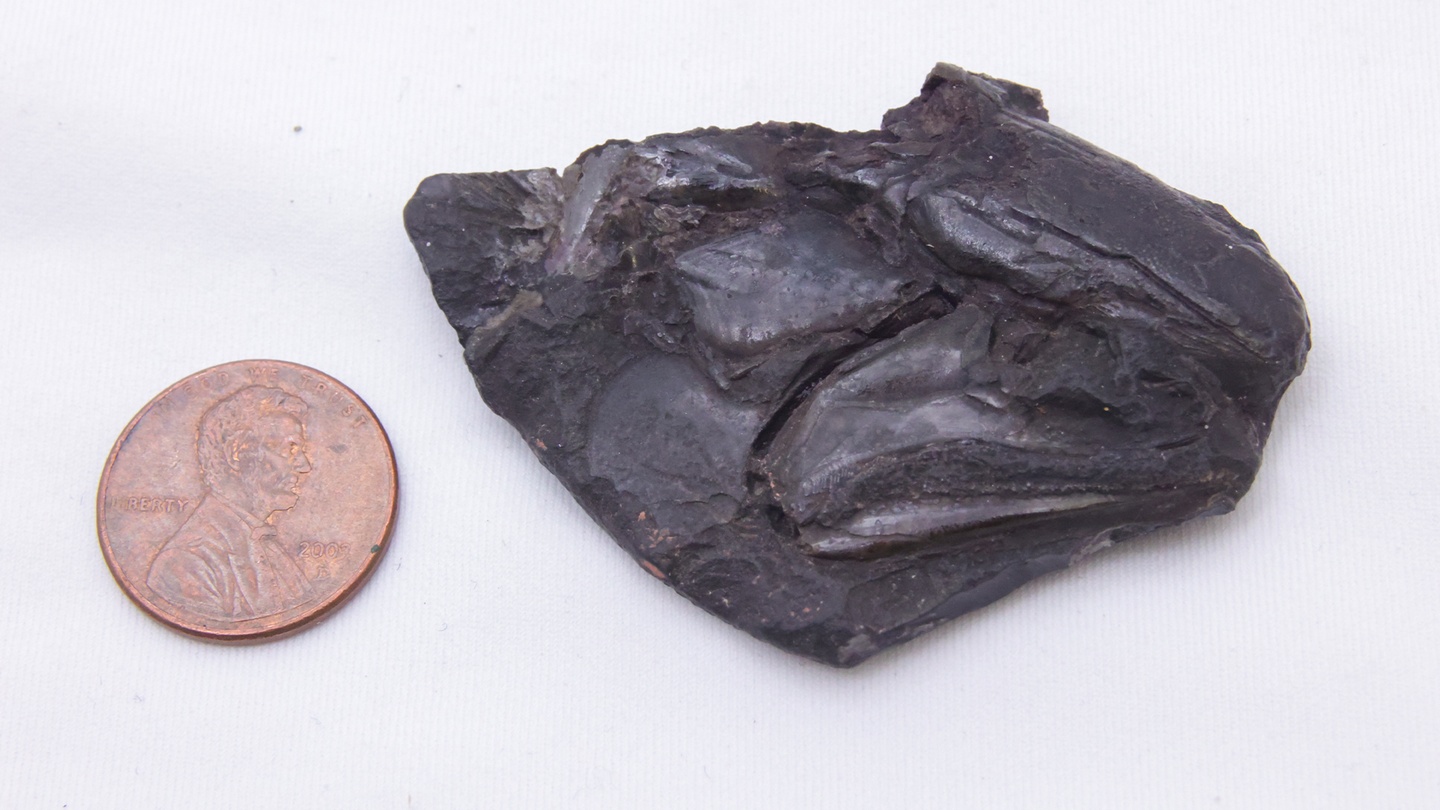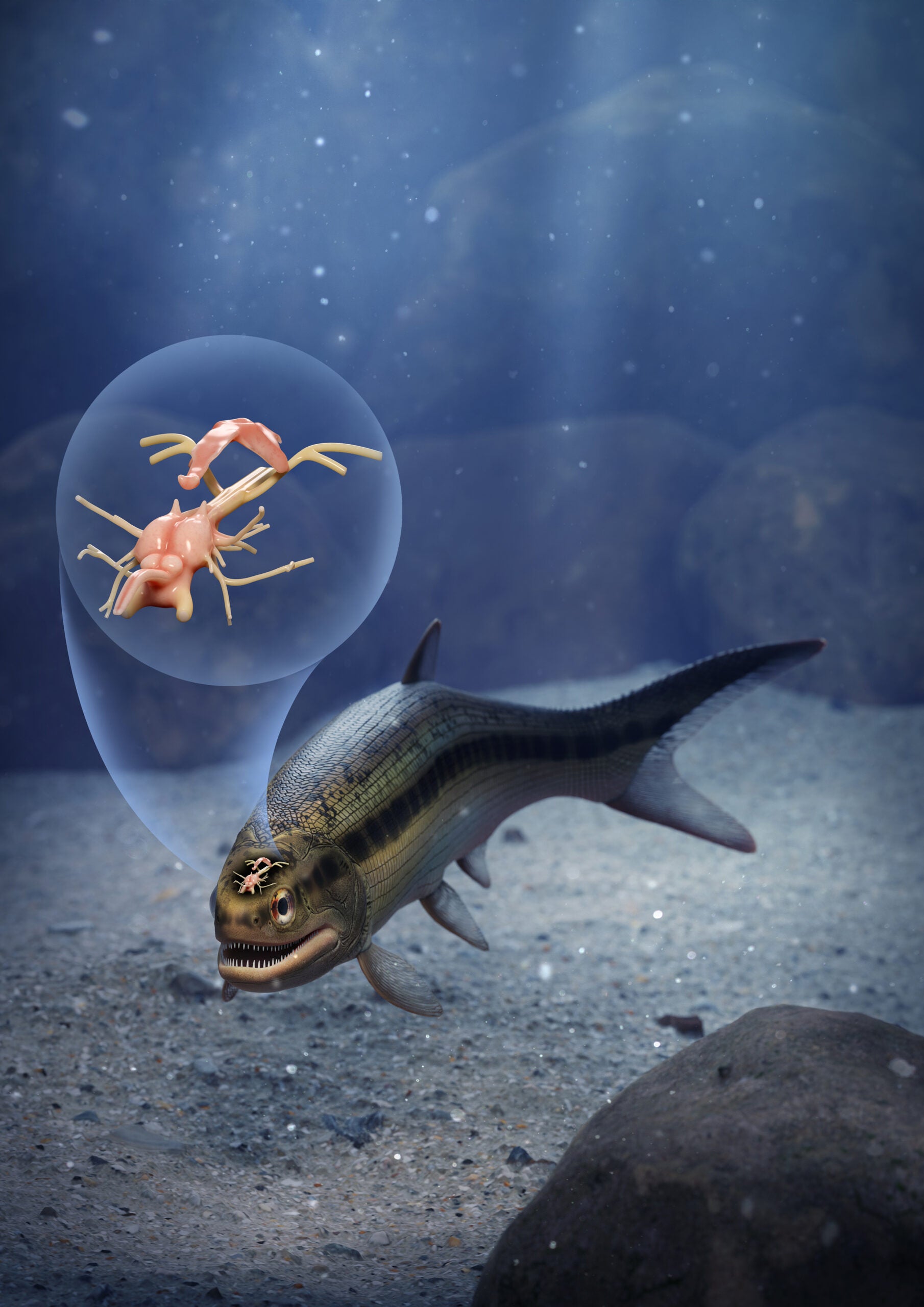
Fossils have been recovered in a number of strange and surprising places including museum drawers and deep in present day deserts. More than a century ago, a 319-million-year-old fossilized fish was found at the Mountain Fourfoot coal mine in Lancashire, England. It was safely stored at the Manchester Museum and scientists are still learning from it 125 years later.
A CT scan of the fossil has revealed it contains the oldest example of a well-preserved vertebrate brain. The findings are documented in a study published February 1 in the journal Nature. The brain and cranial nerves are about an inch long and belong to the extinct Coccocephalus wildi (C. wildi). This was an early ray-finned fish that likely ate small crustaceans, cephalopods, and aquatic insects while swimming around estuaries. Backbones and fins supported by bony rods called rays are a feature of all ray-finned fishes.
[Related: One wormy Triassic fossil could fill a hole in the evolutionary story of amphibians.]
Surprisingly, Friedman wasn’t looking for a brain when examining the C. wildi skull fossil.
“I scanned it, then I loaded the data into the software we use to visualize these scans and noticed that there was an unusual, distinct object inside the skull,” said co-author and University of Michigan (U-M) paleontologist Matt Friedman, in a statement.
The unusual unidentified blob was brighter on the CT image, which means it was likely denser than skull bones or rock surrounding the fossil. It also displayed multiple features common in vertebrate brains, including bilateral symmetry, hollow spaces that look similar to ventricles, and multiple filaments.

These softer parts of vertebrate fossils are preserved, via a unique fossilization process where the soft tissues that made up the fish’s brain and cranial nerves were replaced with a dense mineral that preserved three-dimensional structure in remarkable detail.
The skull fossil is the only known C. wildi specimen of its species, so the team could only use nondestructive techniques to study it. The team used CT scanning to look inside these early ray-finned fish skulls to learn more about their anatomy and make inferences on evolutionary relationships.
“With the widespread availability of modern imaging techniques, I would not be surprised if we find that fossil brains and other soft parts are much more common than we previously thought. From now on, our research group and others will look at fossil fish heads with a new and different perspective,” said co-author and U-M doctoral student Rodrigo Figueroa, in a statement.
[Related: Spinosaurus bones hint that the spiny dinosaurs enjoyed water sports.]
Specimens from early ray-finned fishes like Coccocephalus can fill in the gaps about initial evolutionary phases of the roughly 30,000 ray-finned fish species living today. According to the authors, the brain structure of Coccocephalus shows that there is a more complicated pattern of fish-brain evolution than is suggested by what’s found in living species alone.
“Not only does this superficially unimpressive and small fossil show us the oldest example of a fossilized vertebrate brain, but it also shows that much of what we thought about brain evolution from living species alone will need reworking,” said Figueroa.
The findings also highlight why it’s important to preserve specimens and maybe clean out junk drawers every now and then.
“Here we’ve found remarkable preservation in a fossil examined several times before by multiple people over the past century,” Friedman said. “That’s why holding onto the physical specimens is so important. Because who knows, in 100 years, what people might be able to do with the fossils in our collections now.”
The post Scientists find 319-million-year-old fossilized fish brain appeared first on Popular Science.
Articles may contain affiliate links which enable us to share in the revenue of any purchases made.
from Popular Science https://ift.tt/lM2IPvF




0 Comments